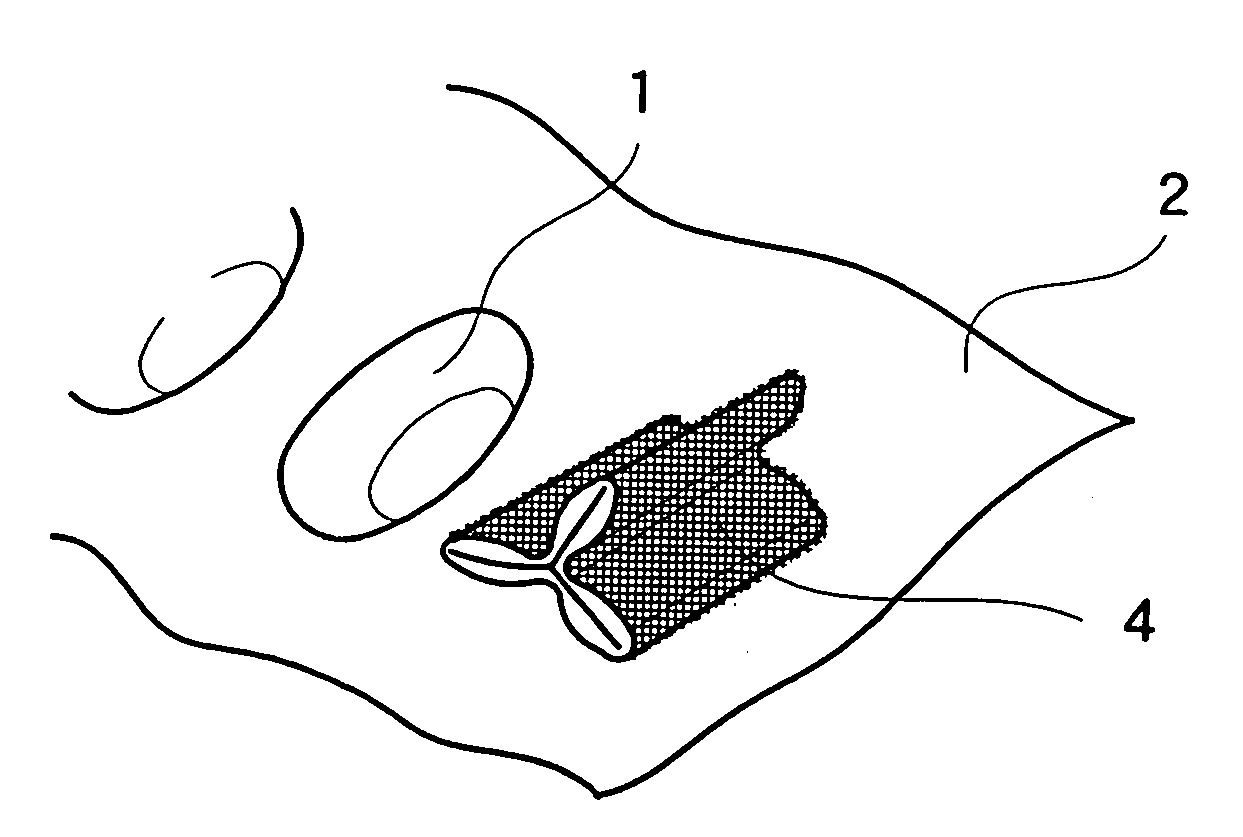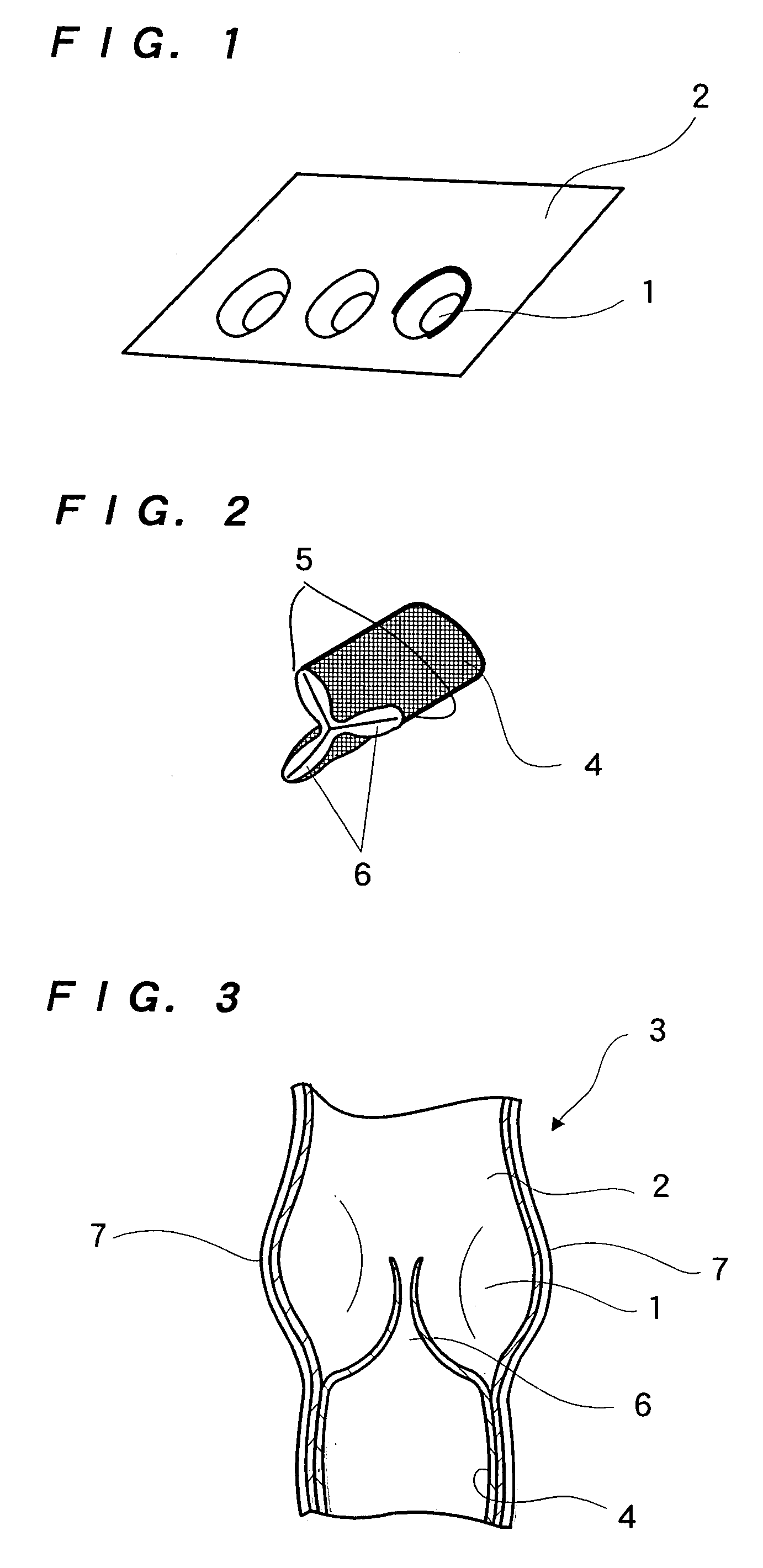Mechanical heart valve and production method thereof
a heart valve and mechanical technology, applied in the field of artificial heart valves, can solve the problems of short supply, affecting the growth of infants, and affecting the development of heart valves, and achieves excellent cell adhesion, keeping pace with infant growth, and excellent cell adhesion
- Summary
- Abstract
- Description
- Claims
- Application Information
AI Technical Summary
Benefits of technology
Problems solved by technology
Method used
Image
Examples
example 1
(1) Production of Tubular Structure
A tubular textile made of polyglycolic acid was set in a mold (20 mm in diameter) designed for a tubular structure having a Valsalva sinus structure 1. The inner mold was put into place from the inside, then a solution of lactic acid-caprolactone copolymer (molar ratio 50:50) in dioxane (5%) was poured into the cavity, frozen at -30° C. and lyophilized at 20° C. for 24 hours. The base body 2 obtained after lyophilization was tubular having a cellular substrate reinforced with a fibrous material in the center (FIG. 7 shows a photograph of a cross-sectional view and FIG. 8 shows a photograph of a plan view). FIG. 1 is an extend elevation showing the tubular structure.
(2) Production of Valve Cusps
A tubular textile made of polyglycolic acid was wrapped around a Teflon test tube having a diameter of 18 mm. This assembly was set in a tubular mold having a diameter of 20 mm, then a solution of lactic acid-caprolactone copolymer (molar ratio 50:50) in ...
PUM
| Property | Measurement | Unit |
|---|---|---|
| diameter | aaaaa | aaaaa |
| diameter | aaaaa | aaaaa |
| doubling time | aaaaa | aaaaa |
Abstract
Description
Claims
Application Information
 Login to View More
Login to View More - R&D
- Intellectual Property
- Life Sciences
- Materials
- Tech Scout
- Unparalleled Data Quality
- Higher Quality Content
- 60% Fewer Hallucinations
Browse by: Latest US Patents, China's latest patents, Technical Efficacy Thesaurus, Application Domain, Technology Topic, Popular Technical Reports.
© 2025 PatSnap. All rights reserved.Legal|Privacy policy|Modern Slavery Act Transparency Statement|Sitemap|About US| Contact US: help@patsnap.com



